Connect to Your Windows VPS
Remote Desktop Protocol (RDP) delivers full graphical control of your Windows VPS. Bring the server’s IPv4 address, the
Administrator password you set in the portal, and a stable network connection.Why Use RDP
🖥️ Full Desktop
Interact with the VPS as if you were sitting in front of the console—perfect for GUI apps, MMC tools, and quick configuration checks.
🔐 Secure Transport
RDP sessions are encrypted end-to-end. Combine it with the portal’s one-time console access for password resets or emergency recovery.
🪟 Cross-Platform Clients
Microsoft ships native clients for Windows and macOS, and open-source alternatives exist for Linux—use whichever device you prefer.
Connect from Windows Desktop
1
Open Remote Desktop Connection
Press the Windows key, type Remote Desktop Connection, and launch the desktop app. Prefer a shortcut? Press 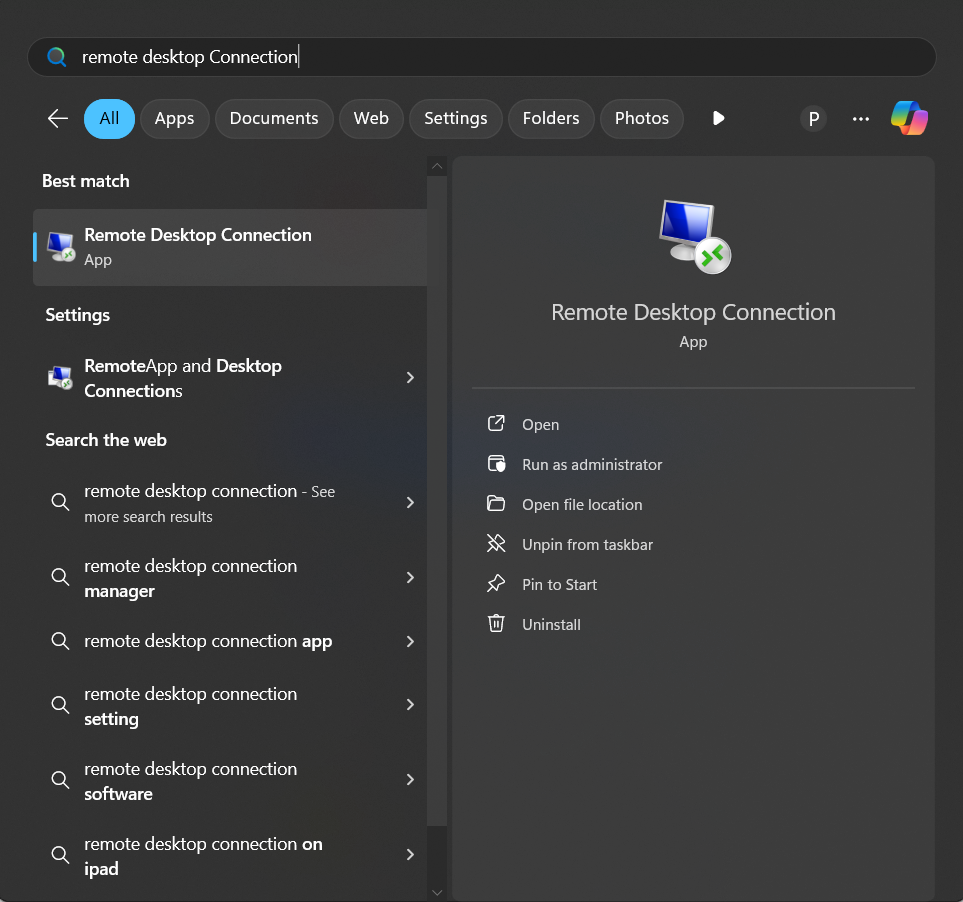
Win + R, enter mstsc, then click OK.
2
Enter the VPS address
In the Computer field, paste the IPv4 address (or hostname) from your welcome email. Click Show Options to expand the dialogue before you connect.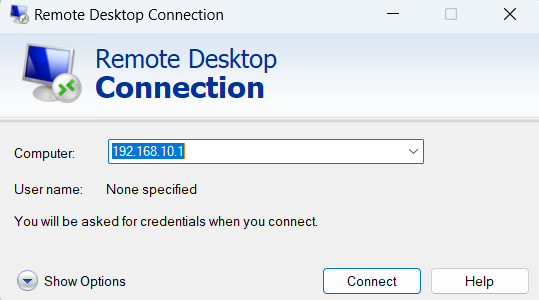

3
Use the Administrator account
Unless you created a custom user, type Administrator. Leave “Ask for credentials every time” enabled if multiple people share the workstation.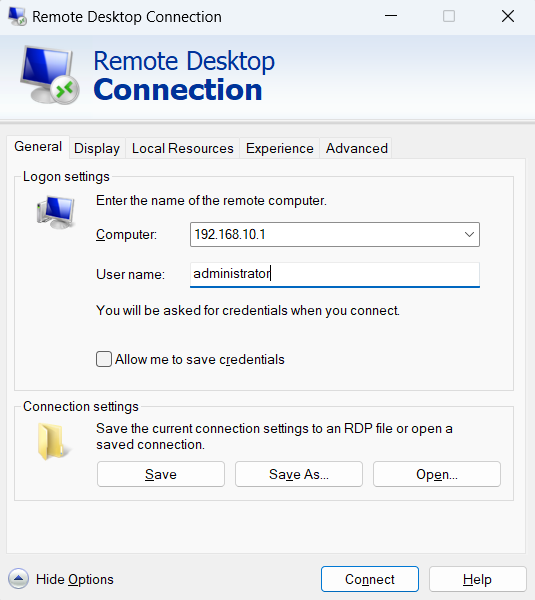

4
Connect and authenticate
Click Connect, enter the VPS password, and accept the certificate warning. Tick “Don’t ask me again” once you trust the fingerprint so the prompt stays hidden next time.

macOS Client (Microsoft Windows App)
1
Install Microsoft Windows App
Download the free client (formerly Microsoft Remote Desktop) from the Mac App Store.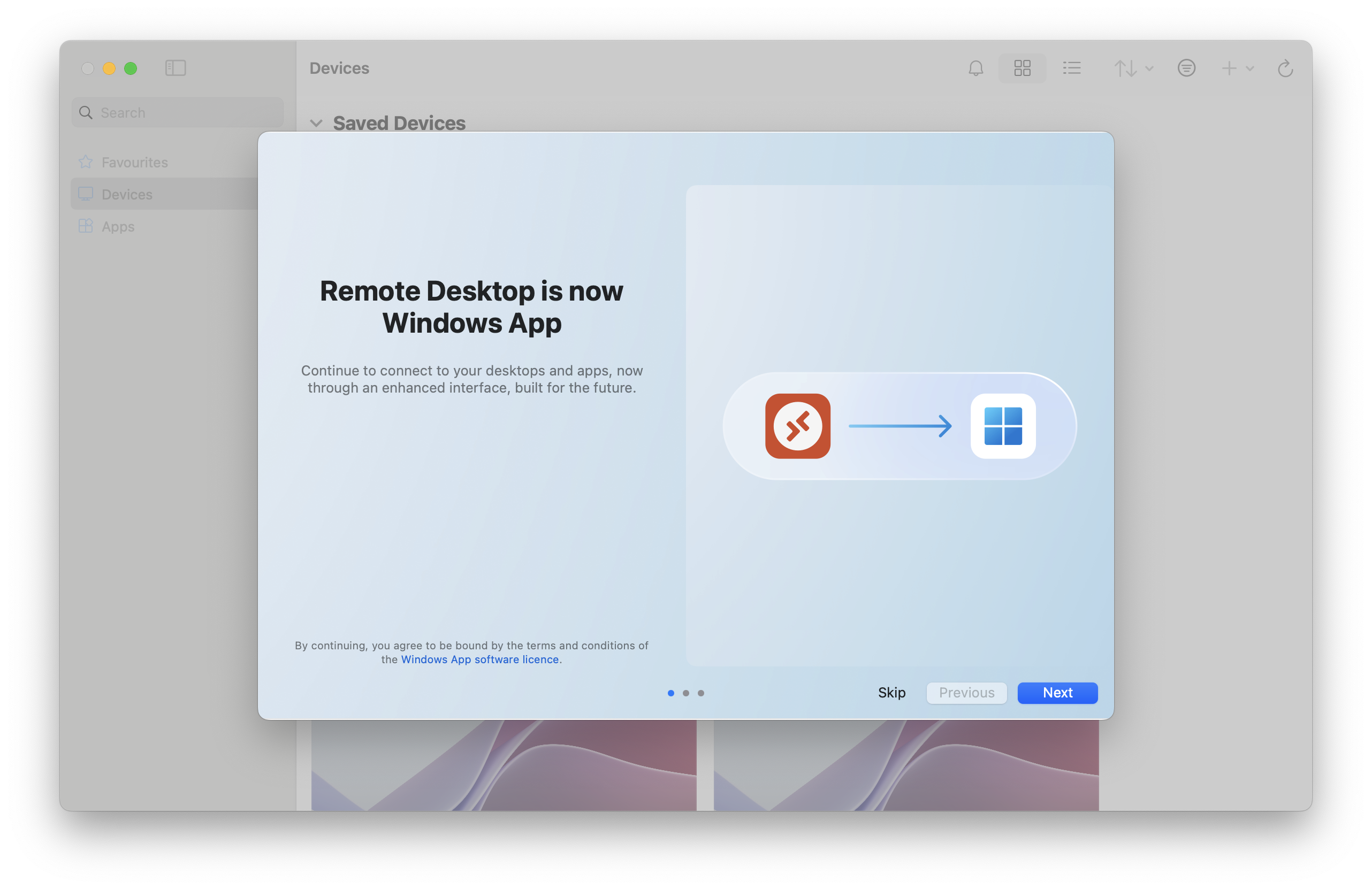

2
Add your VPS
Open the app, click the + button, choose Add PC, and enter the VPS IPv4 address. Give it a friendly name so you recognise it later.

3
Store credentials or prompt each time
Select Administrator (or your custom user). Save the connection and double-click the tile to launch it.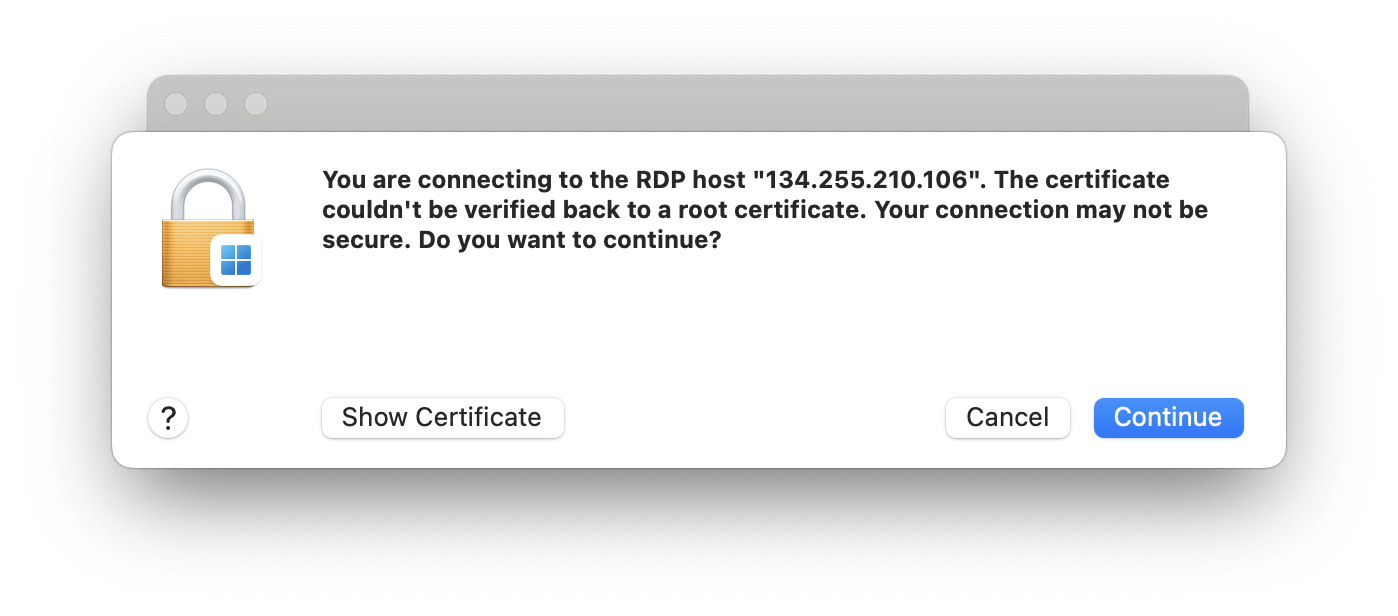

4
Approve prompts and sign in
macOS will ask about certificates and optionally keychain storage—press Continue. Enter the password and you’ll land on the Windows desktop.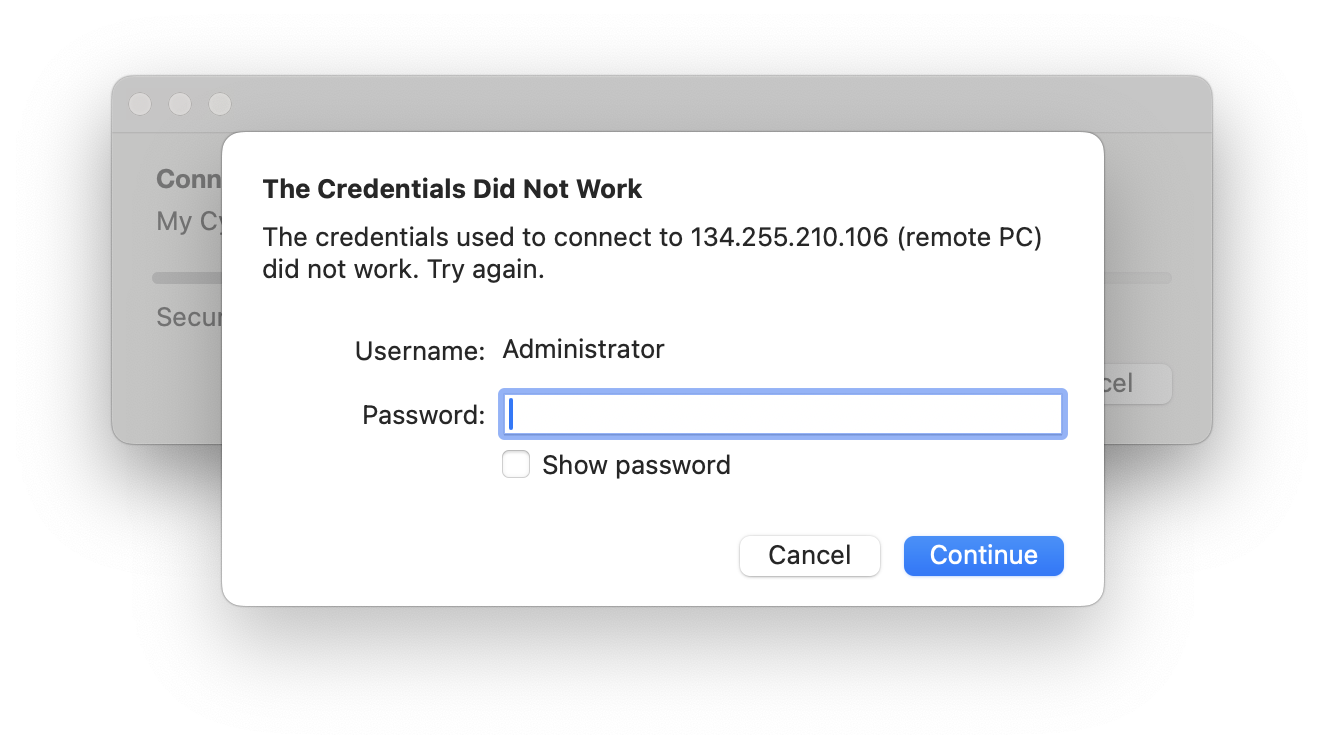

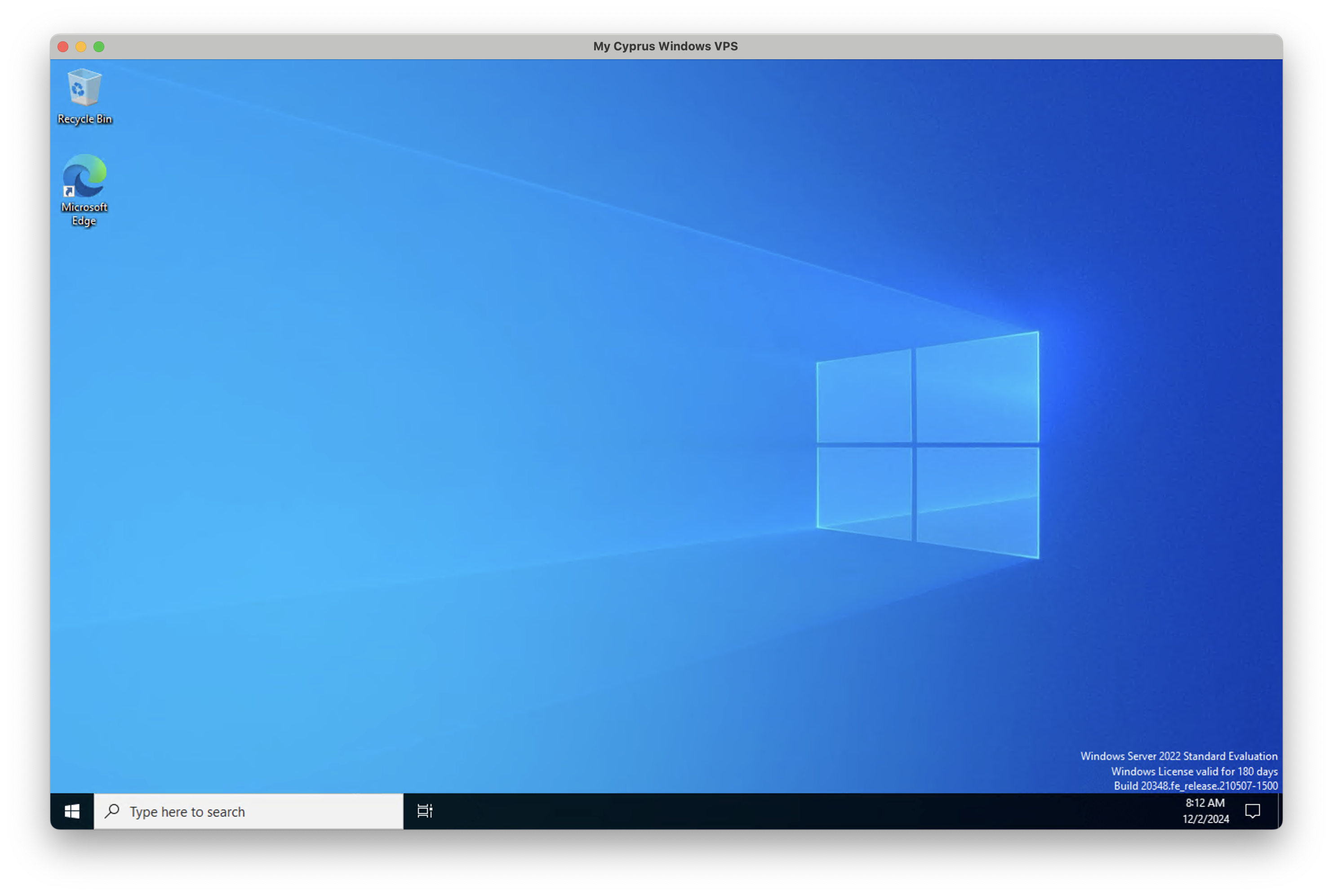
Keep RDP Secure
- Rotate the Administrator password regularly and store it in a password manager.
- Use the portal VNC console to disable/enable RDP if you ever need to lock access quickly.
- Maintain Windows Updates (
Settings → Windows Update) so security patches install promptly.